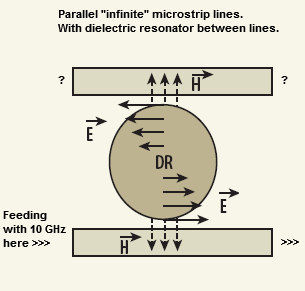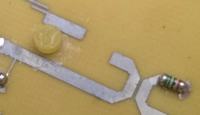Terminator3
Advanced Member level 3
Hello!
Let's place dielectric resonator between two "infinite" microstrip lines.
On the one end of line we put RF source:

What would be current direction in second microstrip line?
Assuming coupling between lines goes only through DR...
original image from: https://mwrf.com/markets/planar-resonators-arm-tunable-oscillators
Let's place dielectric resonator between two "infinite" microstrip lines.
On the one end of line we put RF source:

What would be current direction in second microstrip line?
Assuming coupling between lines goes only through DR...
original image from: https://mwrf.com/markets/planar-resonators-arm-tunable-oscillators



